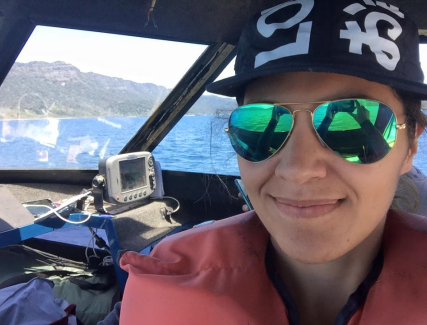Welcome to the TūHOE blog
My place in Waikaremoana
Holly Taylor is one of a handful of Tūhoe that has returned to her roots. When she found out she was hapū, Holly returned to her haukāina of Waikaremōana in Te Urewera to raise her pēpē, Te Mānehurangi.
Her return to Waikaremōana and the birth of Te Mānehurangi coincided with the Crown’s settlement with Ngāi Tūhoe. The settlement sought to ease generations of tensions between the Crown and Tūhoe and the final settlement included financial, commercial and cultural redress; an historical account and Crown apology; and the ongoing co-governance of Te Urewera.
Holly says her decision to raise Te Mānehurangi in Waikaremōana was so she could be surrounded by her whenua and tīpuna, so she knows who she is, where she comes from, and who her people are. Nestled safely amongst generations of Tūhoe whānau, Te Mānehurangi is set to grow up in a new era of Tūhoe history.
Recently joining the Waikaremōana Tribal Biodiversity team in Te Urewera, Holly has taken a lead role in kaitiakitana and is a staunch advocate for keeping aquatic pests at bay. A major concern for the Waikaremōana Tribal Biodiversity team is the spread of invasive water pests which clog up waterways, create drowning hazards and endanger native species. The aquatic pest ‘Largarosiphon’ has been in Lake Waikaremoana for 10 years, but its impact has significantly reduced in recent years with the dedicated effort of both Tūhoe and conservationists working hard to keep the largarosiphon at a minimal risk.
Holly says it is a daily priority and an ongoing effort to enforce aquatic pest safety messages so largarosiphon doesn’t spread to the neighbouring waterways and lakes. Holly says it’s a big responsibility to get others to look after the lake.
“A lot of us say we look after our whenua, but we’re actually not. It’s quite hard to tell people that they need to wash their gears in between the lakes to stop the spread of water pests. Even though everyone is aware of the issue, some of us have got that ‘It’s not us attitude…we don’t have to do anything, this is our home….’ kinda attitude”.
One of the biggest challenges faced by the Waikaremōana biodiversity team is waste. Holly says that with manuhiri from all over the world visiting Waikaremoana throughout the year, rubbish is left behind. A key message is to “pack in and pack out”, making sure that what you bring into Te Urewera, is also taken back out with you.
“I’ve seen people leaving rubbish behind, and I’ve seen people leaving notes pointing towards the toilet, because they’ve found people going toilet behind rocks and trees. Yeah rubbish is a pretty big one. Make sure to take your rubbish with you, and let us know ASAP if any of the hut toilets aren’t working.”
Holly says she has made positive lifestyle changes for the well being of herself, Te Mānehurangi, and Te Urewera.
“My time is dedicated to baby, and when I’m at work I’m learning so much about both old and new ways of looking after Te Urewera. When I get me time, I like to exercise. I like to run up the hill to Kaitawa, do weights and work out in front of the lake. I’m a bit boring, everyone else goes partying [laughs]…I’ve just started getting in to gardening, testing out my green thumb, and apparently it works. I’ve done possuming before and I really enjoyed it that was a hobby.”
Protecting her patch with a passion, Holly reaffirms the importance of everyone cleaning their gears between waterways. Aquatic pests like largarosiphon only need 1 cell to reproduce so it is important to wash your gears. Holly says she hopes one day there will be a wash station in the rohe but until then, it is crucial to get into the easy habit of ‘CHECK, CLEAN, DRY’.
CHECK: Anything that’s been in contact with water.
CLEAN: Soak small gears in 1l water to 1c salt. Spray larger gears in 1l water to 1c salt.
DRY: Leave it to dry for at least 48 hours to make sure pests are completely dead.
Next time you visit Waikaremoana, call into the Aniwaniwa Visitors centre where you might just bump into Holly and her whānau. So make sure to stop in and say Kia Ora, and find out more about what Waikaremoana has to offer.
Remember to Check, Clean and Dry whānau!



